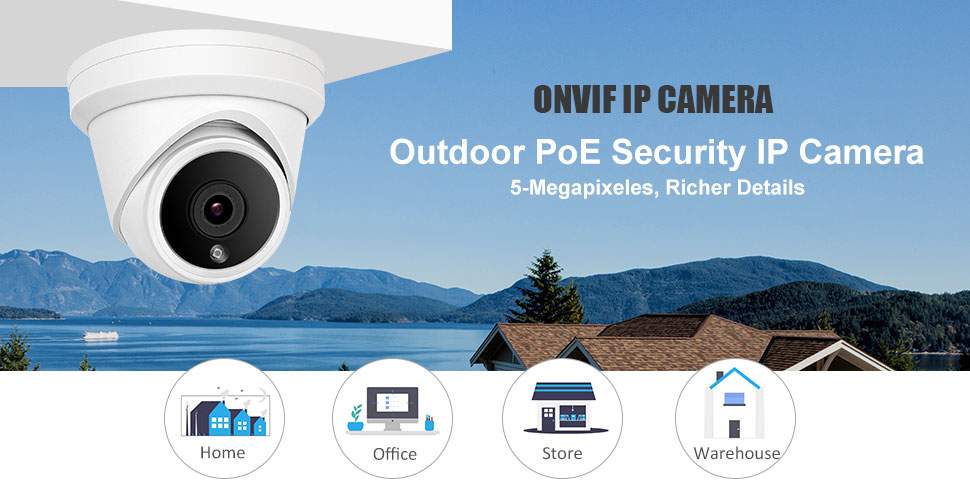
What is the ONVIF IP Camera Protocol?

(ONVIF) stands for Open Network Video Interface Forum. It.s one type of open industry standard that provides interoperability among IP safety devices such as security cameras, video recorders, applications, and access control systems. Those devices can communicate by using a systematic protocol understood by both parties the same way people have a universal language, for example, Spanish, English, Japanese, etc.
When there’s no direct integration between these devices using the manufacturer’s proprietary protocol, you can use the ONVIF protocol to make them operate together, provided that they are compliant with the same profile. When folks think about IP surveillance programs, they generally start looking for ONVIF IP camera makers because they want to utilize the IP camera benefits to have freedom of choice due to their CCTV project.
History & Purpose of ONVIF Camera
(ONVIF) Open Network Video Interface Forum Camera System was first created in 2008. It’s an open industry standard that has been made to provide interoperability, or compatibility, between IP devices. Before this standard came into existence, every manufacturer had their protocol they followed that averted different Branded-products from working with others.
You can think about the ONVIF protocol as a frequent language that all the ONVIF-compliant devices are able to comprehend. In case the ONVIF protocol did not exist, then you’d be limited to only using products from the same manufacturer. For instance, if there was only one manufacturer with high-quality IP cameras but low-cost NVRs and another with low-quality IP cameras but high-quality NVRs, you would have to settle for either one. You would not have the ability to mix the apparatus.
How does the ONVIF Camera work?
- By using the identical protocol, every IP security apparatus can receive the same commands to execute some instructions such as initiate a High-resolution video streaming, record the footage or move a PTZ (Pan Tilt Zoom) camera.
- Those commands are well recorded and accessible to every member who wants to be compliant with the protocol standards. They just need to receive the documentation and get started developing according to this specification.
- After finish the development it’s essential to run software to check if the system meets the compatibility requirements before submission to the official record.

Advantages of ONVIF Camera Protocol
- As stated before, the principal benefit of this ONVIF protocol is that it gives the customer the flexibility to choose precisely what products and services from that manufacturer they would want to utilize. This means that the consumer would no longer need to use defective products from the same manufacturer in exchange for their higher-quality merchandise. It also permits them to try out devices with new features from different manufacturers without purchasing a completely new system.
- In addition to giving the end-user more liberty, the ONVIF protocol also enables software developers to produce software faster. Before, the programmers would have to check every producer’s documentation to comprehend which protocol they employed. This slowed down the developing process, but it also required software upgrades each time the producer came out with a new feature or changed the protocol. But with the ONVIF protocol, the applications programmer would already understand which protocol is being used and only have to code one software that will be compatible with all devices.
- It’s also beneficial for safety integrators and contractors. Instead of being locked into using just one manufacturer, the installer can look across all producers to find the best security solution for your end-user. This assists the integrator in earning more profits, but it also makes the world more secure and secure.
Profiles of ONVIF IP Camera
The ONVIF protocol works with a different group of attributes called profiles. Suppose you wish to configure an IP camera to broadcast a video stream to a recorder. In that case, the fundamental profile will be sufficient and as long as both devices are compliant, and that which will work just fine and you will be a joyful person. But if you want some additional feature like alarm, video analytics or PTZ control, it is necessary to use a different profile to achieve the job.
Inside the ONVIF protocol are items called profiles. These profiles have been “a predetermined set of characteristics that have to be supported by a conformant device and client”. Essentially, profiles cope with extra features that will be compatible with other devices. Here is a fast overview of all of the profiles and precisely what their features are used for:
Profile A:
- Card Deader
- Other device complement
- Access control configuration
Profile C:
- Site information
- Event and alarm
- Door access control
- Door control and event management
Profile G:
- Video and audio storage
- Receive metadata
- Edge storage and retrieval
- Configure, request, and control recording
Profile Q:
- Discovery
- Configuration
- Quick installation
- Control of compatible devices
- Plug-n-play compatible supports
Profile S:
- Video streaming
- Audio streaming
- PTZ Controls
- Video settings
- Basic video streaming
Conclusion
The above-mentioned are key reasons why you should consider installing a construction site ONVIF IP Camera in Bangladesh. In case you have any questions about your ONVIF Camera program, it is always best to talk to an experienced professional. A reputable professional supplier Company would have the ability to guide you to the right products and advise you on how to improve the use of your system.